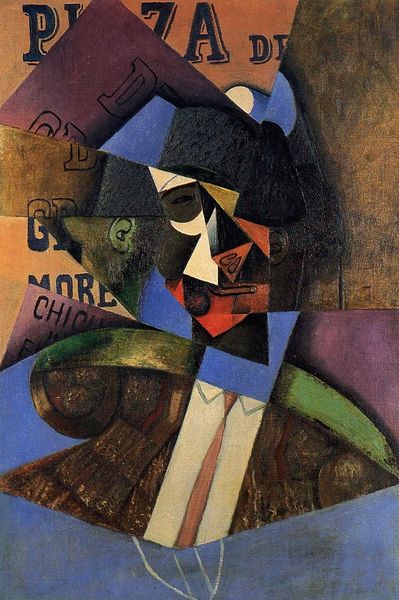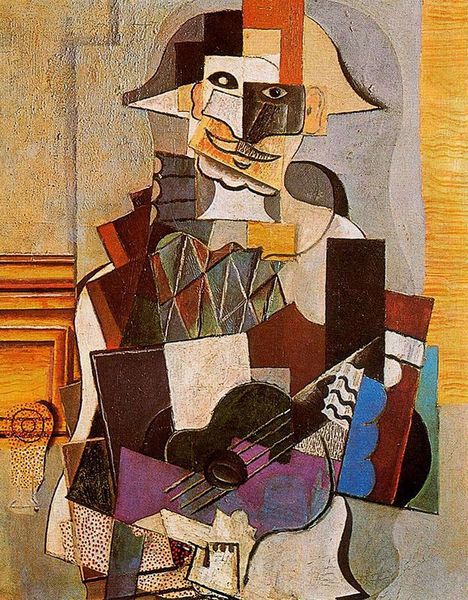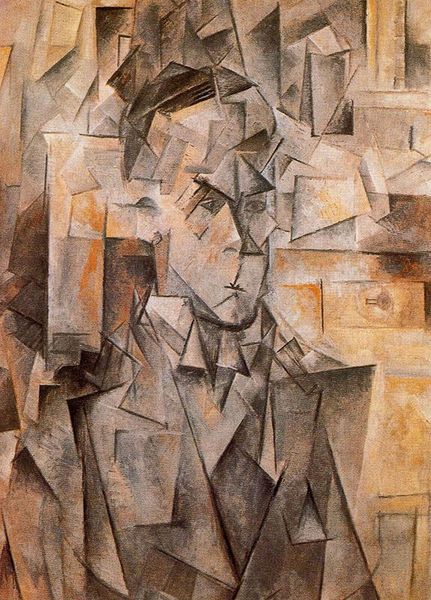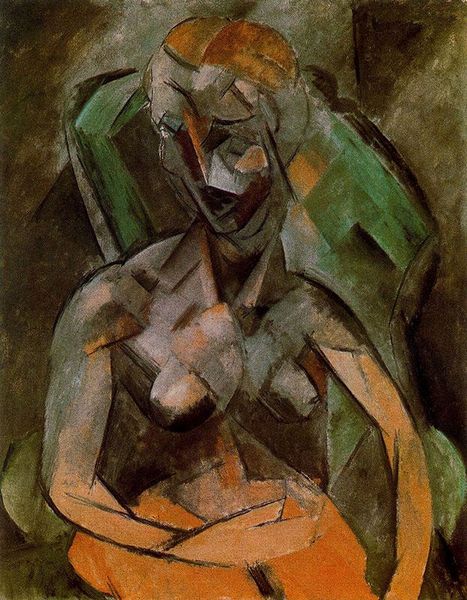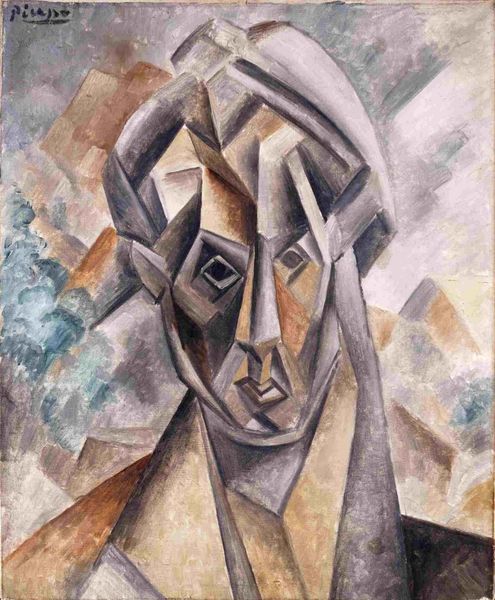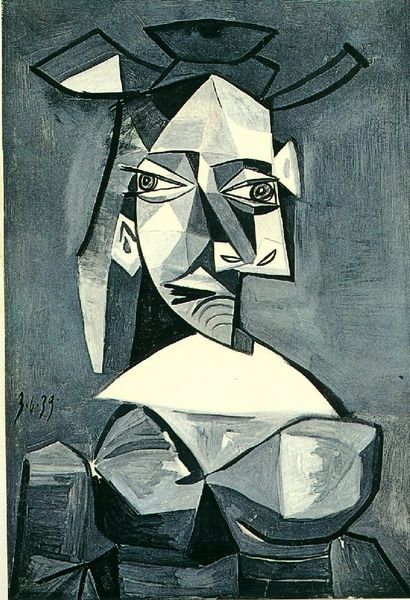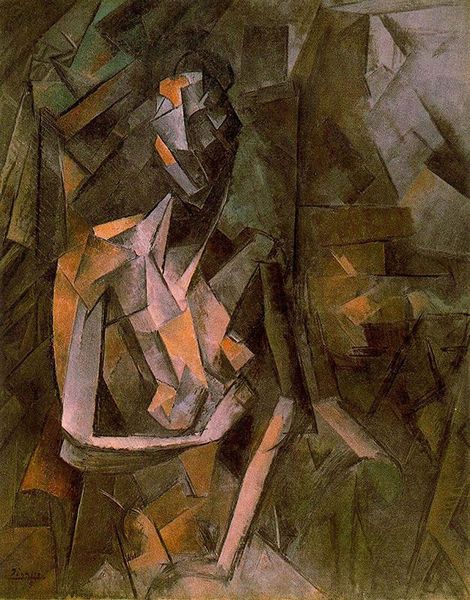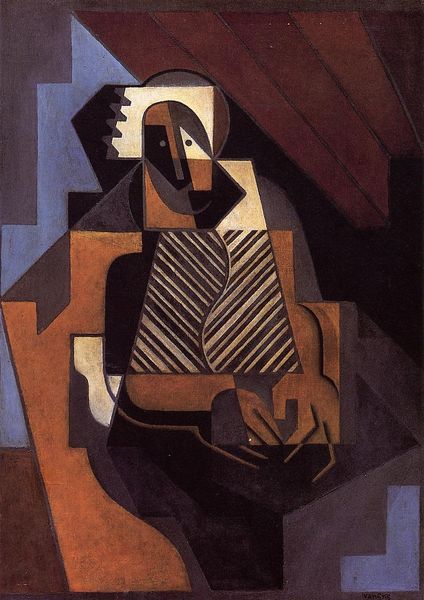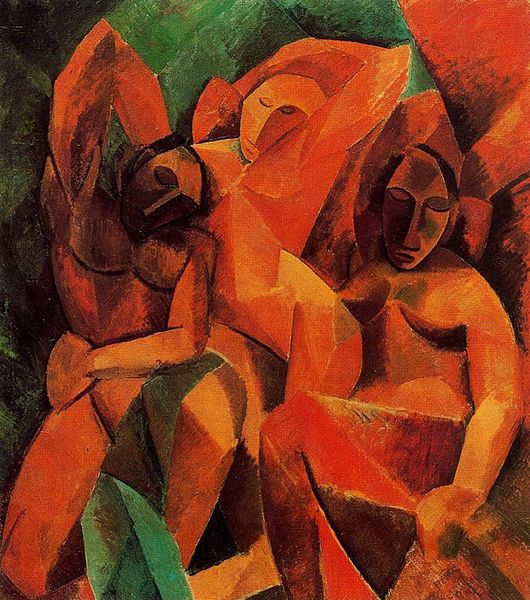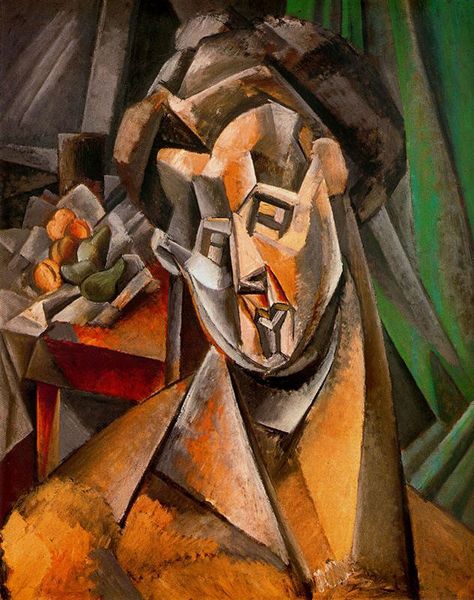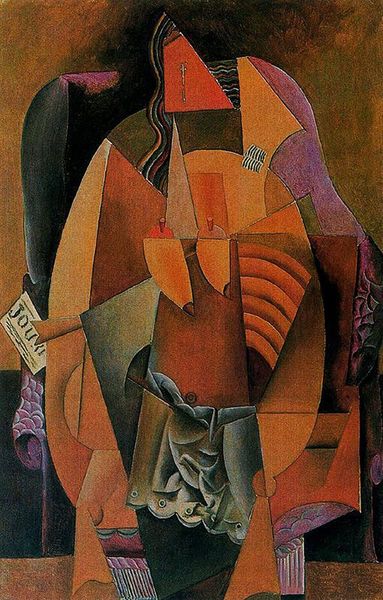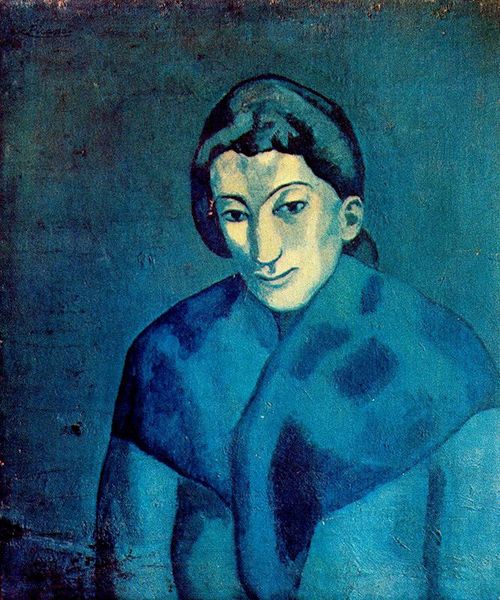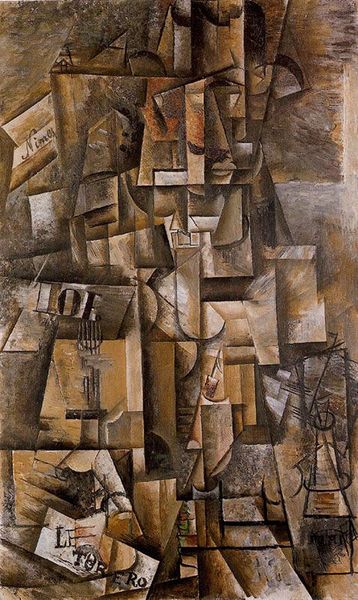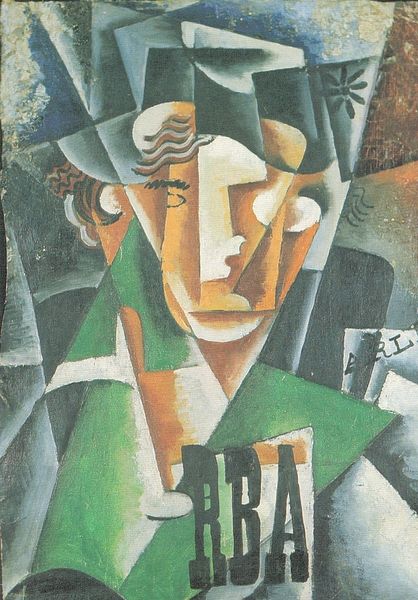
painting, oil-paint
#
portrait
#
cubism
#
painting
#
oil-paint
#
oil painting
Copyright: Public domain US
Editor: So, this is Picasso’s "Bust of Woman with Flowers" from 1909, done in oil paint. It's incredibly striking how the figure is fragmented into these geometric shapes, yet there's still a softness, almost a warmth to it. How do you interpret this work, especially considering the context of early Cubism? Curator: Well, considering the era, early Cubism was a radical act. Think about the patriarchal structures within which artists like Picasso were working. He's deliberately dismantling the traditional, idealized representation of women prevalent at the time. This portrait challenges viewers to consider fragmented identities. Does the fracturing speak to societal expectations placed upon women, the many roles they had to fulfill? Editor: That's fascinating. So, you're suggesting the fragmentation isn't just a stylistic choice, but a commentary on female identity in the early 20th century? Curator: Precisely! And consider the flowers – a recurring symbol. Are they a symbol of beauty, fragility, or something else entirely in this context? Look at how they too are abstracted, losing some of their traditional meaning. Perhaps Picasso is asking us to question how women are so often associated with these conventional symbols. Does the painting's colour palette— the limited tones—reflect or question cultural values? Editor: It's almost like he's stripping away layers, not just of form, but of meaning. I hadn’t thought about how the flowers are almost caged in. Curator: And what implications arise when that "cage" is set beside the disembodied figure? Editor: That definitely reframes the whole piece for me. I went from seeing a portrait to understanding a subtle commentary on identity, society, and expectation. Curator: Exactly. It’s through these dialogues and questioning of accepted narratives that we can truly understand art's potential for social change.
Comments
No comments
Be the first to comment and join the conversation on the ultimate creative platform.
